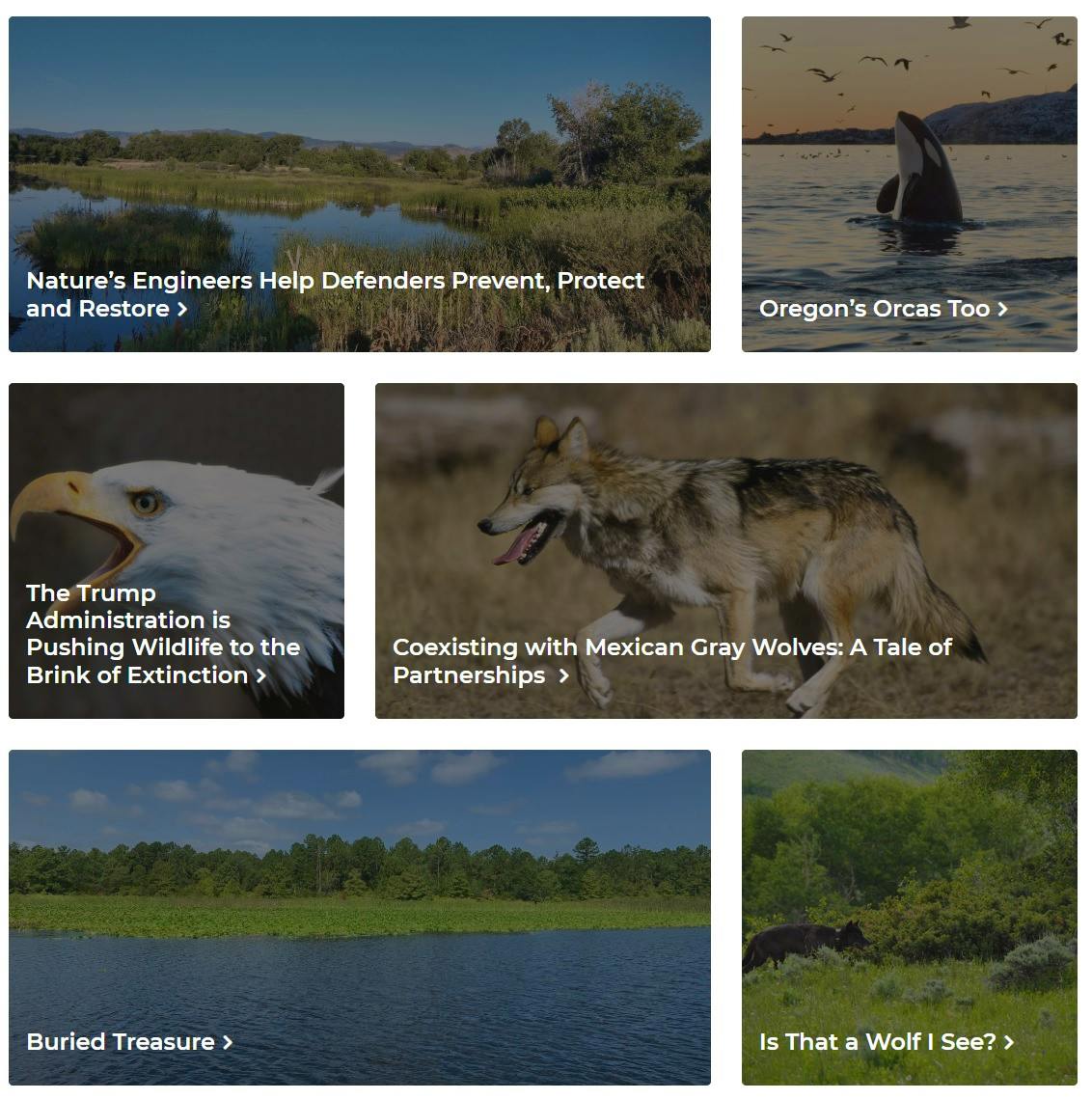At Defenders, we work every day to protect threatened and endangered species. For us, the fight against extinction is always in the forefront of our minds. However, in trying to effectively communicate the importance of protecting wildlife, sometimes we run into a problem where some the information we want to convey ends up being complicated and comes from policy or scientific analyses. At the Center for Conservation Innovation (CCI), where we work at the intersection of science, technology, and policy, we are always looking for creative, practical ways to share information with the goal of educating and promoting conservation action. From social media to infomaphics to videos to blog posts like this one, we have lots of strategies for disseminating information in fun and engaging ways.



I am the summer GIS (geographic information systems) intern here in CCI and I have been a part of exploring yet another approach: story maps. Maps are not commonly thought of as a medium for telling stories, but story maps allow the viewer to interact with spatial information in a way that communicates a clear narrative. They are an immersive format that uses text, pictures, videos, and most importantly, maps. Story maps can introduce you to business or travel or history or science and they can be arranged in various ways, some have users scroll through information in a set order, others allow users to jump around and explore the information on their own like a choose your own adventure book. This variety allows each story map to be unique and emphasize different parts of the information in its own way, making them interesting to you and whatever you are curious about. One aspect connecting these otherwise individual and unique story maps is their use of geospatial information. Maps allow users to visualize habitats threatened by the U.S.-Mexico border wall or compare the impacts of policy changes on critical habitat. These maps are beneficial because they allow people to visit place they may not have an opportunity to visit otherwise and also showcase potentially complicated information in an easily-digestible way.
In the story maps created at CCI, we select amazing pictures of the wildlife Defenders protects, write informative text and map stories that come to life. It’s all about showcasing the science of place - where a species has suitable habitat, where it comes into contact with humans, or where we could reintroduce it to the wild!
We released a story map concurrently with the release of the Trump administration’s new Endangered Species Act (ESA) regulations. These regulations are complicated and reading the federal register notice is not most people’s idea of an engaging read. However, our story map allows you to quickly scroll through to gain an understanding of the harm these new regulations may inflict upon species and conservation in the United States. We provide clear examples of how these regulations will impact five representative species: southern resident orca, southern sea otter, North Atlantic right whale, California tiger salamander and lesser prairie chicken. The narrative continues past these focal species to the critical feature: an interactive map. Test it out – click on your home state to see how many species there are listed under the ESA and then delve a little deeper into information about a specific species. We included the ability to interact with the map because this extinction crisis is all around us. It’s not just in some far away national park or international country and the map brings the issue closer to home. We want to stress the gravity of the administration’s actions in proposing and enacting these regulations.
Although my internship is coming to a close, I hope people continue to engage with the information these maps convey and the stories that Defenders tells. Become inspired to join in the fight to conserve biodiversity and stop extinction, like I was while at Defenders.
Olivia Windorf graduated from the College of William and Mary in May with a BS in Biology and Environmental Science. At Defenders, she is working on refining the ranges of listed species to create more accurate ranges with the Center for Conservation Innovation.







